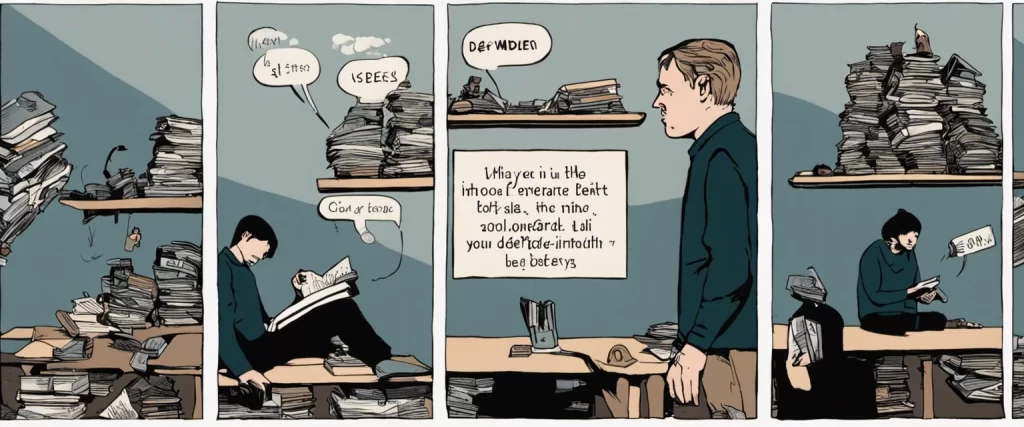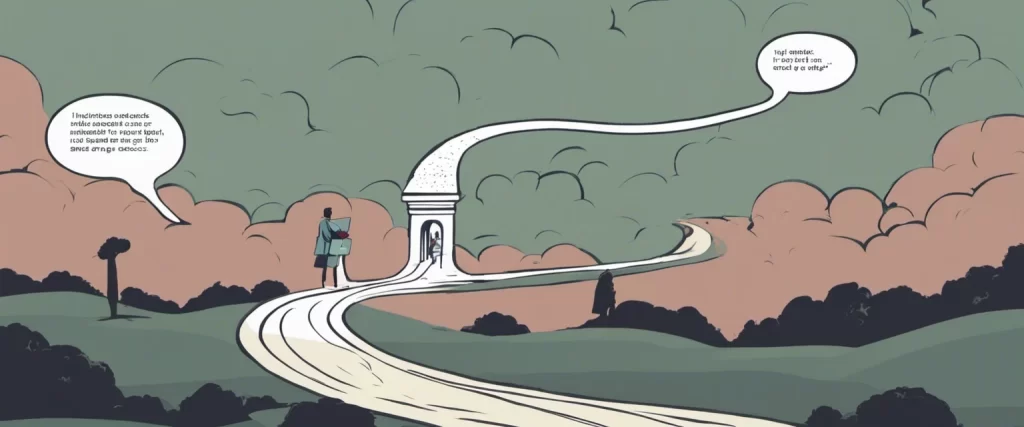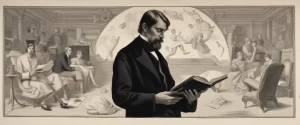—A Template for Understanding Big Debt Crises & Debt
Debt, a fundamental aspect of human civilization, has shaped economies, societies, and even personal lives for thousands of years. Two widely acclaimed books – Ray Dalio’s “A Template for Understanding Big Debt Crises” and David Graeber’s “Debt: The First 5,000 Years” – explore this complex subject matter, diving into the intricacies of debt crises throughout history. While both authors delve into the profound impact of debt on our world, each offers a unique perspective that enriches our understanding of this phenomenon.
In “A Template for Understanding Big Debt Crises,” renowned investor and entrepreneur Ray Dalio presents a comprehensive analysis of debt crises, outlining a historical framework to comprehend their causes, mechanics, and implications. Drawing from Dalio’s extensive experience in financial markets, the book seeks to provide readers with a practical template to navigate and mitigate the impacts of debt crises within economic systems. Dalio argues that understanding the patterns of debt crises is crucial for individuals, policymakers, and investors in order to effectively address and manage their consequences.
Contrarily, David Graeber, an anthropologist, challenges conventional notions of debt in his groundbreaking work, “Debt: The First 5,000 Years.” Graeber takes a radically different approach, aiming to debunk historical economic narratives that portray debt as a mere financial transaction. Instead, he contends that debt is a deeply rooted social and cultural phenomenon that predates monetary systems, shaping the very foundation of human relations. Through an anthropological lens, Graeber explores the transformative power of debt, exposing the often hidden dynamics of power, servitude, and social norms that have persisted throughout history.
While Dalio’s “A Template for Understanding Big Debt Crises” leans toward an economic analysis, emphasizing the implications of debt crises within financial markets, Graeber’s “Debt: The First 5,000 Years” takes a broader interdisciplinary approach, bridging anthropology, history, and sociology to challenge traditional perspectives. Although both books may appear to address separate realms of debt, they ultimately converge in shedding light on the profound impact debt has on societal structures, individual agency, and the dynamics of power and control.
Through this comparative study, we aim to unravel the parallel and divergent arguments presented by these influential authors. By juxtaposing the economic-focused framework of Dalio’s analysis with Graeber’s sociocultural exploration, we seek to deepen our understanding of the manifold intricacies and consequences of debt crises. Furthermore, we hope to highlight the lessons and insights that these books offer, shedding light on not only the historical contexts but also the implications of debt crises for our modern society.
By exploring the works of Ray Dalio and David Graeber, we embark on a journey to navigate the intricacies of debt crises, striving to foster a more nuanced comprehension of the ever-relevant topics of finance, economics, anthropology, and the influence of debt on human civilization.
Brief Summary of Two Books
A Template for Understanding Big Debt Crises by Ray Dalio
“A Template for Understanding Big Debt Crises” by Ray Dalio is a concise and insightful guide that explores the recurring patterns and dynamics of major debt crises throughout history. Using his firm Bridgewater Associates’ research, Dalio presents a systematic approach to understanding and navigating these complex economic events. He outlines a framework that incorporates debt cycles, economic downturns, and the role of central banks and governments. Through historical examples and practical insights, Dalio provides readers with a template to recognize and respond to big debt crises that impact economies worldwide.
Debt: The First 5,000 Years by David Graeber
“Debt: The First 5,000 Years” by David Graeber is a historical and anthropological exploration of the concept of debt throughout human civilization. The book challenges the conventional narrative that debt is a basic human instinct, arguing that it is rather a social and political construct that has evolved over thousands of years. Graeber explores the history of debt from ancient Mesopotamia to modern-day society, examining the various forms and functions it has taken. He critiques the modern system of debt, highlighting its profound impact on individuals, communities, and economies. Overall, “Debt” offers a thought-provoking analysis of the relationship between debt, power, social hierarchies, and human interactions.
Comparison between Two Books

Similarities in big debt crises
Both “A Template for Understanding Big Debt Crises” by Ray Dalio and “Debt: The First 5,000 Years” by David Graeber delve into the subject of big debt crises and offer valuable insights on the topic. While these books may differ in their approach and perspective, they do share some similarities in their analysis of big debt crises. Here are the key similarities between these books:
1. Historical Perspective: Both books adopt a historical perspective to examine and understand big debt crises. They explore various instances of debt crises throughout history, showcasing patterns and recurring themes.
2. Societal Impact: Both Dalio and Graeber highlight that big debt crises have profound implications for society as a whole. They argue that such crises are not merely economic events but also deeply intertwined with social, political, and cultural factors.
3. Debunking Traditional Narratives: Both authors challenge conventional wisdom and question popular beliefs surrounding big debt crises. They criticize orthodox economic theories by offering alternative narratives and explanations for the causes and consequences of such crises.
4. Critique of Debt Systems: Dalio and Graeber both critique the prevailing debt systems and their role in exacerbating big debt crises. They argue that debt systems often lead to unsustainable levels of debt and inequality, ultimately resulting in periodic crises.
5. Role of Power Structures: Both books emphasize the role of power structures in perpetuating and exacerbating big debt crises. They highlight how political and economic elites use debt as a tool to maintain control and exercise power over less privileged individuals and nations.
6. Importance of Debt Jubilees: Dalio and Graeber both discuss the idea of debt jubilees as a potential solution to big debt crises. They suggest that forgiving or restructuring debts can help alleviate the negative impacts on individuals and societies, providing a fresh start for economic growth.
It is important to note that while these similarities exist, the books may differ in their specific arguments, interpretations, and proposed solutions regarding big debt crises.
Divergences in big debt crises
A Template for Understanding Big Debt Crises by Ray Dalio and Debt: The First 5,000 Years by David Graeber are both important books that delve into the topic of debt crises. However, they approach the subject from different angles and provide varied perspectives on big debt crises.
1. Framework vs. Historical Analysis:
Dalio’s book, A Template for Understanding Big Debt Crises, focuses on providing readers with a comprehensive framework for understanding and analyzing debt crises. He outlines a step-by-step process and presents a template that can be used to evaluate and predict debt crises. Dalio draws on extensive research and historical examples to support his framework.
Contrarily, Graeber’s Debt: The First 5,000 Years offers a more historical analysis of debt, examining its origins and tracing its evolution over thousands of years. While the book does touch upon debt crises at various points, it does not provide a specific, structured framework for understanding them. Instead, Graeber explores the cultural, social, and political aspects of debt through historical anecdotes and examples.
2. Macro vs. Anthropological Perspective:
Dalio’s book primarily takes a macroeconomic perspective, analyzing the various factors and indicators that contribute to debt crises on a national or global scale. He highlights the importance of understanding credit cycles, debt sustainability, monetary policy, and other macroeconomic concepts.
In contrast, Graeber’s Debt focuses more heavily on the anthropological angle of debt, examining its role in shaping societies, power dynamics, and human interactions. While debt crises are discussed, they are portrayed within the larger context of human history, social structures, and cultural norms.
3. Practical Application vs. Conceptual Critique:
Dalio’s book is geared towards providing practical insights and tools for readers to develop a deeper understanding of debt crises and potentially apply this knowledge to make informed decisions. He emphasizes the importance of examining historical patterns and utilizing his template to navigate and mitigate the impact of big debt crises.
On the other hand, Graeber’s Debt takes a more critical stance on the concept of debt itself, examining its profound impact on societies and individuals throughout history. Graeber challenges traditional economic theories and provides alternative perspectives on the role of debt in economic systems, arguing that it often perpetuates inequality and unjust power dynamics.
In summary, while both A Template for Understanding Big Debt Crises and Debt: The First 5,000 Years explore the theme of debt crises, they differ in their approach and focus. Dalio’s book provides a structured framework for understanding and analyzing big debt crises, emphasizing macroeconomic factors and practical application. Graeber’s book takes a historical and anthropological perspective, critiquing the concept of debt itself and its impact on societies and power structures.

Conclusion
Both “A Template for Understanding Big Debt Crises” by Ray Dalio and “Debt: The First 5,000 Years” by David Graeber offer unique perspectives on debt and its impact on societies. Choosing one over the other depends on your preferences and interests. Here’s a brief comparison to help you make a decision:
Ray Dalio’s “A Template for Understanding Big Debt Crises”:
– Dalio, a successful investor, provides a template/framework to understand and navigate big debt crises.
– Focuses on analyzing the mechanics and historical patterns of debt crises using economic principles.
– Offers insights into how central banks, policymakers, and investors can anticipate, mitigate, and respond to potential crises.
David Graeber’s “Debt: The First 5,000 Years”:
– Graeber, an anthropologist, explores the historical, cultural, and sociological aspects of debt throughout human history.
– Provides a critical examination of debt’s role in shaping societies and economies.
– Covers a wide range of topics, including the origins of money, moral implications of debt, and relationships between debt and power.
Both books have their merits, but it ultimately depends on what you seek in a read. Best Economics Books of All Time include Die with Zero by Bill Perkins. If you are primarily interested in a framework for understanding economic and financial factors behind debt crises, Dalio’s book might suit you better. On the other hand, if you prefer a broader exploration of debt as a social and cultural phenomena, Graeber’s book is likely more fitting.



